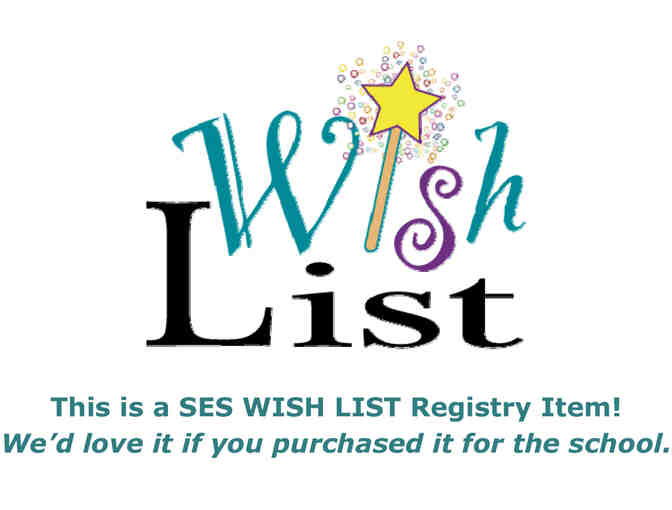Wish List Registry
WISH LIST REGISTRY: Social Behavior Mapping Poster
- Item Number
- 104
- Estimated Value
- 11 USD
- Buy Now Price
- 11 USD
- Quantity Available
- 0
- Sold
- 0
Item Description
Help St. Elizabeth School Implement its SOCIAL THINKING Program with these WISH LIST REGISTRY Items!
Through the SES Bull & Oyster Roast's online auction, SES donors can “buy” items for the school, just like you might for a wedding or baby registry! Items, such as the one described below, help students during therapy sessions, in the classroom, and beyond. This year, our Wish List Registry is filled with curriculum notebooks, books, posters, and other items needed to help SES adopt a SOCIAL THINKING program school-wide. Social Thinking is an expansion of PBIS (Positive Behavior Interventions and Supports) and teaches students how their behavior directly impacts those around them. In other words, it teaches them to think beyond themselves and gives them a deeper understanding of those around them.
Social Behavior Mapping - Listening to the Teacher Talk Posters
27 Needed. Underwrite one for $11 or all twenty-seven needed for $297.
One student is squirming in her seat and shuffling her feet back and forth on the floor. Another is tapping his pen. A third is staring out the window. Some students are frustrated because they want to listen to the teacher but they're constantly being distracted. While a Social Behavior Map can be personalized for each context and person, this poster demonstrates how the concept can be used with a group to specifically address the situation: listening to the teacher talk. It outlines some of the expected and unexpected behaviors when in this group social situation and the different thoughts and reactions others (especially the teacher) may have to these behaviors.
A Social Behavior Map gives teachers a visual tool to discuss with students the link between their expected behaviors and the positive emotions of others, which contribute to positive consequences for the student, ultimately helping the student feel better about him or herself. It also helps students link their unexpected behaviors to negative emotional reactions and related consequences from others, impacting negatively how the student feels about him or herself.
St. Elizabeth School stores data...
Your support matters, so St. Elizabeth School would like to use your information to keep in touch about things that may matter to you. If you choose to hear from St. Elizabeth School, we may contact you in the future about our ongoing efforts.
Your privacy is important to us, so St. Elizabeth School will keep your personal data secure and St. Elizabeth School will not use it for marketing communications which you have not agreed to receive. At any time, you may withdraw consent by emailing Privacy@frontstream.com or by contacting our Privacy Officer. Please see our Privacy Policy found here PrivacyPolicy.


